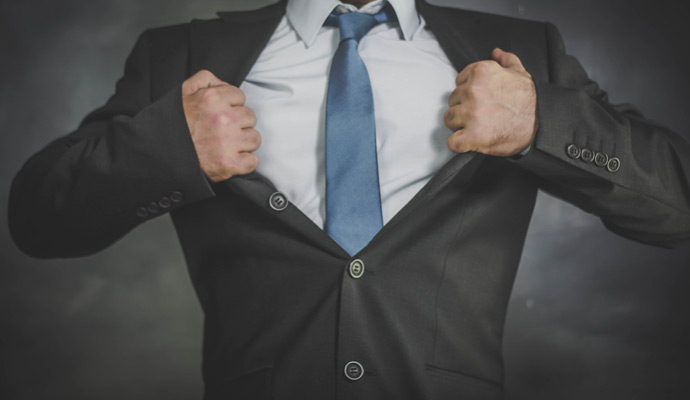How Harley Davidson Revs Its Brand
Harley-Davidson has been able to build a community of enthusiasts around its brand that includes members from very diverse groups, and with almost no advertising. How does the king of heavyweight motorcycling keep its fans so loyal? It gives them a reason to "belong."
In the pantheon of powerful American brands, most, like Coca-Cola, Tide, McDonald's, Levi's and Nike, have reached icon status through long-term, high-visibility campaigns marked by a consistent trumpeting of a simple message. Theirs is a story of deep pockets and relentless promotion.
Occasionally, however, a brand emerges without the panoply of wall-to-wall advertising and in-your-face marketing. Instead, recognition comes from a quiet, behind-the-scenes effort to sell a product more directly on its merits, in its own time and in its own way. And the brand's idiosyncratic path to success becomes a rich field for marketing gurus and academics to mine, offering lessons not only for other offbeat efforts but also for those seeking to better the odds of mainstream campaigns.
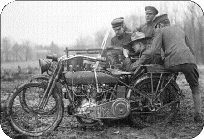 Perhaps no product exemplifies this non-traditional route to brand excellence more than America's freewheeling symbol of the road, the Harley-Davidson motorcycle. Twice at the brink of bankruptcy since the 1960's, the Harley-Davidson Motor Company and its parent, Harley-Davidson Inc., have undergone a stunning metamorphosis in the past decade, fueling a level of demand that is the goal of corporate chieftains everywhere.
Perhaps no product exemplifies this non-traditional route to brand excellence more than America's freewheeling symbol of the road, the Harley-Davidson motorcycle. Twice at the brink of bankruptcy since the 1960's, the Harley-Davidson Motor Company and its parent, Harley-Davidson Inc., have undergone a stunning metamorphosis in the past decade, fueling a level of demand that is the goal of corporate chieftains everywhere.
The change has not only enhanced Harley's standing in the highly competitive and lucrative market for big motorcycles, where it had been pummeled for years by waves of aggressive Japanese imports, but it has also extended the brand's reach to previously untapped businesses as far afield from two-wheel behemoths as fashion and food. Having largely reinvented itself, as both a company and a brand, the Milwaukee-based motorcycle maker is now reaping the benefits of a hip, with-it image even as it prepares to celebrate its 95th birthday next year.
With its feet firmly planted in both the present and the past, Harley offers traditional -- many say retro -- styles and the best, most-refined 1940's technology around. That approach -- marked by ample bulk (some models weigh almost 800 pounds, about twice that of otherwise comparable BMW machines), twin cylinders and a throaty growl -- has been derided by high-tech motorcycling enthusiasts as an inefficient relic of a bygone era. But to Harley's customers, the motorcycles are lovingly crafted works of art. And many genuine artists agree. In a recent exhibit of global design held at London's Victoria and Albert Museum, the object chosen to represent America's design sense was a Harley-Davidson.
How Harley came back from death's door to reach this enviable state is a story of marketing and brand enhancement that can apply as much to tools and furniture as to motorcycles. In large part, the revival stems from a hard-eyed comparison of the competition's strengths (in particular, the ability to quickly turn out new products studded with high-tech innovations) with its own (a unique tradition and a powerful mystique).
The company's conclusion, said Clyde Fessler, vice president for business development, "was to turn left when they turn right. 'Let's be the alternative and do the things they can't do.' And that became our strategy in everything we did and still do."
That meant hitching a clearly defined marketing plan to the goal of capitalizing on the company's special place in American pop culture, including its retro look. By finding new ways to reach out to three core constituencies -- customers, employees and dealers -- Harley managers fanned a lingering loyalty for their products into a revived passion, one powerful enough to prove contagious to many thousands of new buyers. Along the way, the company reversed a painful decline in quality that caused some of its old customers to cross the street to the foreign competition. (See box on page 38.) And it softened its outlaw image just enough to entice a new generation of clean-cut buyers to join a club that had long been synonymous with the Hell's Angels -- yet without taking away the frisson of excitement that came from being a member.
Indeed, membership now doesn't even require a driver's license. Shoppers dropped $100 million last year on Harley-Davidson Motorclothes and an unknown amount on hamburgers and other fare at the Harley-Davidson Cafe in midtown Manhattan. Even kids can join, with toys for the boys and leather-clad Harley Barbie dolls for the girls. (See box on page 34.)
The company accomplished all this by spending very little on advertising -- in fact, by running no ads at all last year. This year, it plans to spend a minuscule $1 million on advertising out of a total marketing budget of just $20 million.
Harley's return has almost been too successful for its own good.
Sales have grown at a compound annual rate of 16.2 percent since 1987, with profits up even more, soaring at a comparable rate of 29.2 percent. Last year, the company reported net income of $166 million on sales of $1.53 billion. To get to those numbers, it moved a lot of metal, posting worldwide sales of 118,000 big bikes -- those with engines of 650 cubic centimeters or more -- up from 55,000 in 1989. This year, the company plans to sell 130,000.
But that will not be enough to satisfy demand. The appetite for Harley motorcycles is now so strong that it can take a year or two to get one, even if a customer is willing to pay the thousands of extra dollars that some dealers are tacking onto the usual list price of $15,000 or more.
To catch up, the company has committed $200 million to expand production capacity to 200,000 units by 2003, its centennial year. In the meantime, the inability to meet demand is decidedly a mixed blessing.
On the plus side, Harley enjoys some of the production economies that have made direct computer sellers like Dell and Gateway 2000 such spectacular successes. Every motorcycle that Harley makes has already been sold; in effect, the company is now building to order. That means no steep inventory costs for the big bikes relating to storage, financing and other expenses. (The company is reducing inventory costs for spare parts and accessories in another way: through a sophisticated intranet system that connects its nearly 1,000 dealers worldwide to a central customer data base. See article on strategic uses of information technology, page 80.)
The downside to not keeping up with demand, of course, is the loss of business to the competition. Just how much of a loss is not clear. Harley's share of the heavyweight motorcycle market in the United States was 48.2 percent in 1996, virtually unchanged from the 48.5 percent share it held in 1991, according to R.L. Polk & Company, a market research firm based in Detroit. Harley managed to hold its own during that period even as the overall big-bike market in the United States nearly doubled, to 166,000 units. But some Harley dealers say they could easily sell twice as many bikes as they now get.
Whatever the actual number of lost sales, Harley's gap between supply and demand represents an opportunity for Japanese and other importers to exploit, giving them that much more of a perch from which to build their own brand loyalty.
Why the shortfall? Harley executives say they have been reluctant to expand too fast for fear of compromising their renewed commitment to quality. But there is a "Depression mentality" at work as well, said Christopher Hart, a management consultant in Boston who has worked with the company. Having gone to the edge of bankruptcy twice before, Harley's top brass are in no hurry to tempt the fates again.
The bottom line, then, is rich in irony: the senior managers of one of the most recognized symbols of American excess -- the chrome-laden, ultraheavy Harley is known affectionately as "the hog," after all -- turn out to be conservative keepers of the flame.
And therein lies still another lesson for managers in other industries who wouldn't know a Harley from a Ducati: fashions change. If the hog fell out of favor before, it might fall out of favor again. But by guaranteeing quality, rather than pushing for every last sale, the company can count on a core group of customers to remain loyal. And by extending the brand's good name in different directions, Harley is finding new customers who don't necessarily want to own a motorcycle at all. In both ways, Harley's managers are tapping into a more stable revenue stream that should help to keep the company afloat during whatever bad times lie ahead.
The Lifestyle Hook
What kept Harley going in its darkest days, and what is driving it now in high gear, is the plain fact that the motorcycle it makes is not just a product but rather the centerpiece of a lifestyle -- even for its managers.
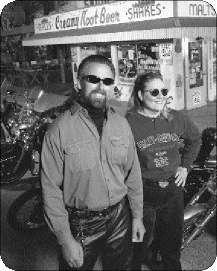 The Harley management team, in fact, has a visceral connection to the brand and to its customers that is difficult to match in most corporate boardrooms. The senior executives own the motorcycles and ride with their customers. Indeed, they are customers, journeying to Harley rallies and taking their places on the same waiting lists to get new bikes.
The Harley management team, in fact, has a visceral connection to the brand and to its customers that is difficult to match in most corporate boardrooms. The senior executives own the motorcycles and ride with their customers. Indeed, they are customers, journeying to Harley rallies and taking their places on the same waiting lists to get new bikes.
"We are committed to motorcycling," Richard F. Teerlink, Harley's chairman and former chief executive, said in a recent interview. "It's not hardware; it is a lifestyle, an emotional attachment. That's what we have to keep marketing to."
As an American icon, Harley has come to symbolize freedom, rugged individualism, excitement and a sense of "bad boy rebellion."
"Harley reflects many things Americans dream about," said Benson P. Shapiro, a consultant and a marketing professor at the Harvard Business School. "They're a little bit naughty, a little bit nice, which is a very attractive brand image to have."
Significantly, Harley benefited from its unsought association with outlaw bikers and films like "The Wild Ones" and "Easy Rider." Harley riders like the awe the bikes inspire at stoplights or when groups ride into small towns. Many Harley owners and employees (at least of the old school) feel such a bond to their bikes that they have a weakness for tattoos of the company's logo.
Rather than quietly observe this strange cultural phenomenon, Harley executives publicly boast about it. In the 1996 annual report, Mr. Teerlink wrote: "Most people can't understand what would drive someone to profess his or her loyalty for our brand by tattooing our logo onto his or her body -- or heart. My fellow employees and I understand completely. We also understand very clearly that this indescribable passion is a big part of what has driven and will continue to drive our growth."
Harley has marketed this emotion across a broad consumer population, from blue-collar craftsmen and bearded, beer-bellied "motorheads" to a growing legion of chief executives, investment bankers and high-profile entertainers, including Arnold Schwarzenegger, Jay Leno and Billy Joel. The profile of the typical Harley owner has steadily gone up during the past decade, in both age and household income (from 32 to 44 years and from $30,000 to $72,000), as more white-collar baby boomers have bought the bikes to fulfill a lifelong dream. How many boomers are holding the handlebars? One rough measure: 31 percent of all Harley owners are college grads.
Yet while catering to this new upscale market, Harley has managed to avoid alienating its traditional customer base, the hard-core Harley lovers, whom Mr. Teerlink referred to as "the enthusiasts." "It's an honor to be a status symbol," he said, "but status symbols go away. We want to be part of your life."
To keep that role, Harley-Davidson has become adept at fostering "customer intimacy" -- and even extending the concept to dealers and employees. Harley's 5,500 employees, for example, vie with each other to attend rallies and other company-sponsored events during the year. Being a Harley employee at a rally is a "badge of honor," said Joanne M. Bischmann, the company's marketing vice president.
Indeed, it would be difficult, said Mr. Hart, the Boston-based consultant, to find a management team that stays as close to its customer base. "I don't know of any company, and I've worked with all sorts of companies," he said, "where the senior executive team goes out to the Four Corners and spends over a week riding with a group of customers to an event celebrating the product."
And Harleys, without question, are celebrated products, functional works of art to their owners, much like a Rolex watch, a Bang & Olufsen stereo, a Wurlitzer jukebox.
George Conrades, the chief executive of BBN, a software company in Cambridge, Mass., owns six motorcycles, three of them Harleys. "They are Barbie dolls for grownups," he said, explaining the propensity of many Harley owners to spend thousands of dollars adding customized parts and accessories to their machines.
Mr. Conrades, a former senior vice president for marketing at I.B.M., chatted rationally about Harley-Davidson's marketing challenges -- including the need to take more advantage of the customization craze, which the company has largely ceded to third-party vendors. But his eyes lit up -- and emotion took over -- when he mentioned a new Harley model. "Have you seen that Heritage Springer?" he asked. "You don't know whether to ride it or put it in your living room. It's just gorgeous."
That kind of passion explains how Harley has been able to cross so many socioeconomic boundaries. Its owners are buying much more than a mode of transportation. What bonds them to the bikes -- and ultimately to each other, at rallies and other events -- is a mutual appreciation of the look, feel and sound of the machines.
The Japanese competitors, such as Honda, Kawasaki, Suzuki and Yamaha, along with German giants like BMW, have taken straight aim at the heavyweight or so-called cruiser market, which accounts for about 45 percent of total motorcycle sales in the United States. And while they have captured a bit more than half of that market -- producing high-quality machines that look and sound something like Harleys, while costing less -- they have been unable to match the Harley mystique, at least so the Harley camp says.
"The people buying the other bikes are new to the cruiser market and don't know any better," said Mark O'Neil, the marketing manager at Cycle-Craft, a 38-year-old Harley-Davidson dealership in Everett, Mass. "But to those who already own a Harley, they just laugh and say, 'Good try, bad result.' Harley's heritage evolved over a long time. You can't just come in and say, 'We have that, too.' "
The Bumps In The Road
But for many years, from the 60's to the early 80's, it was far from clear that Harley's heritage would continue to be a living one. Time and again, the company seemed to be heading into a wall.
By the mid-1960's, Harley was the last of more than 200 American motorcycle makers to survive. But poor family management, a decline in quality and the sudden onslaught of Japanese motorcycles were all pushing it to the brink of bankruptcy. A rescue came in 1969, when the American Machine and Foundry Company purchased Harley for $21 million.
But A.M.F. saved Harley only to run it back into the ground. To its credit, A.M.F. started by pouring millions into the company. By 1973, Harley was turning out 37,000 motorcycles a year and pulling in $122 million in sales. A.M.F. forced the company into overproduction, however, further compromising quality. Harleys, which already had a reputation for leaky engines and creaky temperaments, were now almost untouchable.
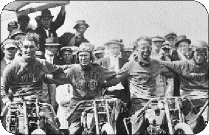 In the mid-70's, A.M.F. went too far when it replaced the Harley name with its own. Apparently unaware of the magnitude of that marketing blunder, which sent sales plummeting, A.M.F. soon began looking to unload the troubled company. In 1981, Vaughn Beals, Harley's chief executive at the time, pulled together a dozen other company officers who found outside financing and became the new owners.
In the mid-70's, A.M.F. went too far when it replaced the Harley name with its own. Apparently unaware of the magnitude of that marketing blunder, which sent sales plummeting, A.M.F. soon began looking to unload the troubled company. In 1981, Vaughn Beals, Harley's chief executive at the time, pulled together a dozen other company officers who found outside financing and became the new owners.
Saddled with $70 million in debt from the buyout amid a terrible recession and a continued push by Japanese competitors, Harley-Davidson was a company on life support for several years. It lost more than $50 million in 1981 and 1982 and by 1983 was facing bankruptcy again.
In desperation, management publicly railed against the Japanese for allegedly "dumping" their bikes on the American market below cost in a bid to capture a bigger slice of the business. Harley squawked loud enough to persuade President Ronald Reagan to impose a stiff tariff on the Japanese imports, gaining the American company some breathing room. Ironically, at the same time, Harley executives were touring Japan and bringing back such vaunted production methods as just-in-time inventory control and quality circles.
Mr. Beals later acknowledged to The New York Times that after years of blaming the Japanese, Harley finally admitted that its troubles were internal. "We realized the problem was us, not them," he said.
With a complete make-over of its manufacturing processes focused on quality, Harley commenced its rebirth. Desperately needing cash to finance the revival, the company went public in 1986 and quickly became a darling on Wall Street.
Mr. Beals and Mr. Teerlink were clear with investors from the outset that the company's main asset was its brand, which had managed somehow to survive all the corporate miscues. The company certainly was in need of a jump-start in the marketplace, they conceded. But, they quickly added, once it got moving again, Harley knew where it wanted to go.
A road map had already been drawn by Mr. Fessler, now the company's vice president for business development. Mr. Fessler joined Harley in 1977 as the advertising and sales promotion manager and became part of the marketing strategy team in the early 1980's, with a mandate to put a new face on the company's tarnished image.
He recently recalled a four-day strategy meeting he held back then with Harley's new ad agency, Car-michael Lynch of Minneapolis.
"On a big piece of paper, we drew up a list of comparisons between the Japanese bikes and ourselves," he said. "We put down all the strengths and all the weaknesses. The Japanese were global, into long-term strategic planning, did a lot of advertising and had great diversity in their global markets. They could take a concept from idea to product in 18 to 24 months.
"As for Harley, we had heritage, tradition, mystique. How were we going to compete against these giants? We looked at where they had been the previous five years and were able to project where they were going in the next five -- new engines, new frames, new suspensions, very high-tech. So we decided to be the alternative."
Out of that decision came a number of key concepts that determined Harley's fate:
![]() Back To The Future: Harley made a clear choice to stay with its traditional styling, a classic 1940's and 50's design that aficionados believe motorcycles were meant to have. In Willie G. Davidson, the grandson of one of the founders, the company had a vital link to its design heritage. Dressed in black leather and beret, Mr. Davidson, now the 64-year-old head of the design department, took to the road and met with Harley customers, listening to their comments. Voicing disdain for the slick Japanese machines, they expressed nostalgia for old Harley models and the outlaw touches that had turned Harleys into "choppers." Willie G. designed new lines like the Softtail to mimic the beauty and elegance of 40's classics like the Hydra Glide.
Back To The Future: Harley made a clear choice to stay with its traditional styling, a classic 1940's and 50's design that aficionados believe motorcycles were meant to have. In Willie G. Davidson, the grandson of one of the founders, the company had a vital link to its design heritage. Dressed in black leather and beret, Mr. Davidson, now the 64-year-old head of the design department, took to the road and met with Harley customers, listening to their comments. Voicing disdain for the slick Japanese machines, they expressed nostalgia for old Harley models and the outlaw touches that had turned Harleys into "choppers." Willie G. designed new lines like the Softtail to mimic the beauty and elegance of 40's classics like the Hydra Glide.
"We experimented with radical designs inside," Mr. Fessler said. "But every time we did that, we found out the customers didn't want it and we had to fall back."
![]() Build A Community: In 1983, at the urging of Mr. Beals, Mr. Fessler set out to create a company-sponsored club for Harley riders. The Harley Owners Group, or H.O.G., was started as an organization that would sponsor rallies, offer special promotions and keep Harley owners in close contact with the company and each other. For as long as anyone could remember, Harleys had been called hogs, but the connotation was a negative one, of outlaw bikers like Hell's Angels. "My thought was to turn a negative into a positive," Mr. Fessler said. For many Americans, the sight and sound of an entourage of Harleys roaring into town meant a nasty motorcycle gang had arrived. So Mr. Fessler pushed hard to get H.O.G. associated with the Muscular Dystrophy Foundation. Under the club's banner, groups would ride for charity. Slowly, the perception began to change. Today, H.O.G. members constitute the fourth-largest contributing group to the Jerry Lewis Telethon each September.
Build A Community: In 1983, at the urging of Mr. Beals, Mr. Fessler set out to create a company-sponsored club for Harley riders. The Harley Owners Group, or H.O.G., was started as an organization that would sponsor rallies, offer special promotions and keep Harley owners in close contact with the company and each other. For as long as anyone could remember, Harleys had been called hogs, but the connotation was a negative one, of outlaw bikers like Hell's Angels. "My thought was to turn a negative into a positive," Mr. Fessler said. For many Americans, the sight and sound of an entourage of Harleys roaring into town meant a nasty motorcycle gang had arrived. So Mr. Fessler pushed hard to get H.O.G. associated with the Muscular Dystrophy Foundation. Under the club's banner, groups would ride for charity. Slowly, the perception began to change. Today, H.O.G. members constitute the fourth-largest contributing group to the Jerry Lewis Telethon each September.
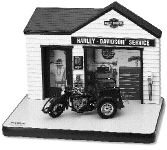
![]() Give Them A Reason To Belong: At the first H.O.G. rally in 1984 in California, 28 people showed up. Today, H.O.G. has 365,000 members in 940 chapters throughout the world. The organization sponsors hundreds of rallies around the country each year, including massive gatherings in Daytona Beach, Fla., and Sturgis, S.D. With the Fly and Ride program, H.O.G. members who are on vacation or traveling on business can call ahead and rent Harleys through local chapters. And every five years, the company and H.O.G. sponsor anniversary reunions in Milwaukee. More than 100,000 riders are scheduled to converge next year to mark the company's 95th birthday. Already, there are no hotel rooms available for that weekend within 100 miles of Milwaukee.
Give Them A Reason To Belong: At the first H.O.G. rally in 1984 in California, 28 people showed up. Today, H.O.G. has 365,000 members in 940 chapters throughout the world. The organization sponsors hundreds of rallies around the country each year, including massive gatherings in Daytona Beach, Fla., and Sturgis, S.D. With the Fly and Ride program, H.O.G. members who are on vacation or traveling on business can call ahead and rent Harleys through local chapters. And every five years, the company and H.O.G. sponsor anniversary reunions in Milwaukee. More than 100,000 riders are scheduled to converge next year to mark the company's 95th birthday. Already, there are no hotel rooms available for that weekend within 100 miles of Milwaukee.
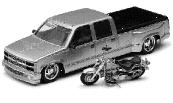
![]() Extend The Brand: Mr. Fessler realized that legions of Harley riders in black leather jackets and black T-shirts also hurt the company's image. Unfortunately, that is what the company sold them. So in 1986, he launched Harley-Davidson Motorclothes, which offered shirts with collars, denim blue jeans, baby clothes and bright-colored fashion items for women.
Extend The Brand: Mr. Fessler realized that legions of Harley riders in black leather jackets and black T-shirts also hurt the company's image. Unfortunately, that is what the company sold them. So in 1986, he launched Harley-Davidson Motorclothes, which offered shirts with collars, denim blue jeans, baby clothes and bright-colored fashion items for women.
At the same time, Harley began to license its popular shield-and-bars logo for hundreds of products, from train sets to Christmas ornaments to the special edition Barbie. In Europe, L'Oreal licensed the name for a line of cologne. Mr. Fessler insisted that the merchandise had to be durable and high quality. The logo was licensed to a Zippo lighter, for example, rather than a Bic disposable.
Each decision to go upscale in ancillary products led to another. Realizing that most of its dealers were ill-equipped to sell fashion items, Harley began to require them to remodel their stores (at their own expense) to showcase the merchandise. Despite grumbling from a few of the 600 domestic dealers, the clothes operation has become a big success, helping to boost sales of Harley parts and accessories, which now account for $210 million a year in revenues.
Meanwhile, the Harley-licensed restaurant in Manhattan, modeled after the Hard Rock Cafe, will soon be joined by another, in Las Vegas. And Harley-Davidson stores selling clothes and other paraphernalia have become familiar tenants in malls around the country.
Mr. Fessler acknowledged some bad decisions -- like licensing the Harley name to a line of cigarettes -- and the company's licensing department now has strict operating guidelines. The idea is to give people access to the Harley experience, whether they own a bike or not. "We always ask, 'Does it somehow lead back to the motorcycle?' " said Ms. Bischmann, the marketing vice president.
She added that Harley toys, built by the likes of Mattel and Kenner, are an excellent way to extend the passion for Harleys to a younger audience, and with an aging customer base, this is a key marketing challenge. "What better way is there to get a 3-year-old to feel the Harley motorcycle experience?" Ms. Bischmann asked.
Critics suggest that Harley is "selling out" and diluting its brand by putting its logo on so many products. But Harvard's Professor Shapiro disagreed. "As long as they don't get distracted from their core business, this helps build the mystique," he said. "If you don't continually change and extend the brand, you die. If you change too much, you also die. But I don't believe Harley has come close to burning out."
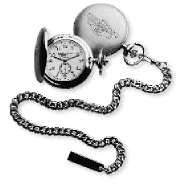
![]() Extend The Enterprise: Even through its bleakest period, Harley has maintained close ties to its dealers. Of the 600 domestic dealers, most have been with Harley for decades; many dealerships have been in the same family's hands for three generations, with one family tracing its ownership back to 1914. The company holds quarterly meetings with an elected 10-member dealer advisory council. In July, every senior Harley manager is expected to attend the annual dealer meeting, where new models are previewed and problems get aired. Six years ago, the company opened Harley-Davidson University, where dealers can take three-day courses in such topics as "How to Manage Your Business" or "How to Create a Succession Plan."
Extend The Enterprise: Even through its bleakest period, Harley has maintained close ties to its dealers. Of the 600 domestic dealers, most have been with Harley for decades; many dealerships have been in the same family's hands for three generations, with one family tracing its ownership back to 1914. The company holds quarterly meetings with an elected 10-member dealer advisory council. In July, every senior Harley manager is expected to attend the annual dealer meeting, where new models are previewed and problems get aired. Six years ago, the company opened Harley-Davidson University, where dealers can take three-day courses in such topics as "How to Manage Your Business" or "How to Create a Succession Plan."
Harley, said Mr. Hart, the consultant, is cognizant of the fact that it was the dealers who came to the rescue as the company went through its rebirth during the mid-1980's. During the first years following the management buyout, "the quality of the bikes was terrible and Harley counted on the dealers to fix them," Mr. Hart said. "They went through the war together and the dealers didn't charge the company back for any of this."
Of course, the dealers make more money from service and the sales of parts and accessories than from sales of the motorcycles, so few are complaining. The relationships are long, deep and symbiotic. Harley understands that the dealer is the customer's conduit to the company. Indeed, for many Harley owners, the local dealership is a second home, a gathering place. "I can set my watch by certain people coming in every day," said Mr. O'Neil of Cycle-Craft.
![]() Add Value: Like Mercedes and Porsche, a Harley holds its value to an astonishing degree, and the company has taken advantage of that fact. In the late 1980's, Mr. Fessler created a marketing campaign called Ride Free, designed to move owners up to bigger, more expensive motorcycles. The company promised owners who bought new Harley Sportsters, the entry-level bike which sold at the time for $3,395, that they could trade them in a year later for a bigger Harley and get the full $3,395 credited toward the price of the new bike.
Add Value: Like Mercedes and Porsche, a Harley holds its value to an astonishing degree, and the company has taken advantage of that fact. In the late 1980's, Mr. Fessler created a marketing campaign called Ride Free, designed to move owners up to bigger, more expensive motorcycles. The company promised owners who bought new Harley Sportsters, the entry-level bike which sold at the time for $3,395, that they could trade them in a year later for a bigger Harley and get the full $3,395 credited toward the price of the new bike.
There is also a huge aftermarket for Harley parts and customizing kits, which Harley shares with legions of independent third-party "chop shops." Personalizing a Harley by innovative paint jobs, scads of new chrome and pricey saddlebags has become its own time-honored Harley tradition. In fact, industry watchers agree with Mr. Conrades that Harley could get a big boost in sales by focusing on this market more than it does.
Not surprisingly, as production shortfalls over the past six or seven years have led to waits of up to two years for new bikes, the value of used Harleys has skyrocketed and owners can often sell their machines for more than they originally paid.
Sometimes they don't have to wait very long at all to make a profit. John Atwood, owner of Cycle-Craft, recalled the day, some four years ago, when he sold a new Harley Road King to a customer who then walked out the door and resold it to someone else in the parking lot for $2,000 more. "He didn't even have the decency to leave my lot," Mr. Atwood said. "I felt like I had a big 'stupid' sticker on my forehead."
Looking Ahead
Harley is quite sensitive to the production shortfall. A new plant, scheduled to open next year, should ease the wait considerably. In the meantime, management watches nervously as some dealers take advantage of the situation by adding $5,000 or more to the suggested retail prices, inevitably turning some would-be customers off for good. Dealers like Mr. Atwood, who have held the line on prices, believe Harley will solve the backlog by 1999. "When Harley gets the bugs worked out with expanded production, things will explode," he said.
Company executives agree that the backlog is far too long. "Our mystique has never been about being hard to get," Ms. Bischmann said. "We don't want the waits; our dealers don't want the waits. This is just an obstacle we have to overcome."
Customers like Mr. Conrades worry that in a society of instant gratification, the supply shortfall "gives people a reason to go elsewhere and explore the other options."
That is Harley's worry, too, of course. The big fear is that significant numbers of motorcycle enthusiasts will opt for the Japanese competition, form their own groups, gain their own cachet and, perhaps, even become accepted by hard-core Harley riders. To prevent this, consultants say, Harley must drive its brand deeper and deeper into the culture, yet without cheapening its image.
Mr. Teerlink agrees, but he says customers will be patient as long as Harley makes it clear that the wait is because "we want to guarantee the same level of quality."
Beyond that, Harley can always count on the staying power of its brand, and on customers like Mr. Conrades. "If I had only one bike," he will tell you, making a vow that sounds unshakeable, "it would be a Harley."
Leveraging The Brand
How powerful is the Harley-David-son brand? The tangible evidence is compelling:
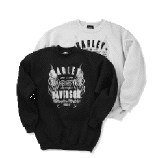
![]() In 1996, Harley spent not a single penny on advertising. It didn't have to. Madison Avenue thinks the company's bikes are so cool that it puts them in ads for countless other products, giving Harley millions of dollars' worth of free exposure. While companies paid $1 million for each 30-second spot during the 1997 Super Bowl, 100 Harleys were on the field as part of the half-time show, again at no cost to the company. Harley's marketing vice president, Joanne M. Bischmann, reports that she is constantly barraged by requests from celebrities to serve as the company's official pitchman. Since Harley has no national television advertising and only a small print campaign , Ms. Bischmann politely declines all requests.
In 1996, Harley spent not a single penny on advertising. It didn't have to. Madison Avenue thinks the company's bikes are so cool that it puts them in ads for countless other products, giving Harley millions of dollars' worth of free exposure. While companies paid $1 million for each 30-second spot during the 1997 Super Bowl, 100 Harleys were on the field as part of the half-time show, again at no cost to the company. Harley's marketing vice president, Joanne M. Bischmann, reports that she is constantly barraged by requests from celebrities to serve as the company's official pitchman. Since Harley has no national television advertising and only a small print campaign , Ms. Bischmann politely declines all requests.
![]() With or without paid advertising, Harley motorcycles -- there are four basic categories, with about 20 different models -- are in such demand that dealers consistently report waiting lists of a year or longer. Even the wife of Harley's chairman, Richard F. Teerlink, had to order a new bike nearly a year in advance to get it in time for his birthday.
With or without paid advertising, Harley motorcycles -- there are four basic categories, with about 20 different models -- are in such demand that dealers consistently report waiting lists of a year or longer. Even the wife of Harley's chairman, Richard F. Teerlink, had to order a new bike nearly a year in advance to get it in time for his birthday.
![]() The company now regularly reports record sales and earnings each year -- $1.53 billion and $166 million, respectively, in 1996. Harley has quadrupled production in the past decade, to about 130,000 this year, but still can't keep up with all the orders.
The company now regularly reports record sales and earnings each year -- $1.53 billion and $166 million, respectively, in 1996. Harley has quadrupled production in the past decade, to about 130,000 this year, but still can't keep up with all the orders.
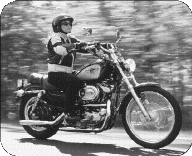
![]() Nearly out of business in 1985 because of its own mistakes and stiff Japanese competition, Harley now has such cachet that its name adorns everything from a popular Manhattan restaurant to L'Oreal cologne to a limited-edition Barbie doll.
Nearly out of business in 1985 because of its own mistakes and stiff Japanese competition, Harley now has such cachet that its name adorns everything from a popular Manhattan restaurant to L'Oreal cologne to a limited-edition Barbie doll.
![]() Harley-Davidson Motorclothes -- mixing black leather jackets with French-cut women's underwear and fashions for tots -- is now a $100 million-a-year business. To sell the merchandise, most of Harley's 1,000 dealers around the world have transformed their greasy showrooms into airy boutiques.
Harley-Davidson Motorclothes -- mixing black leather jackets with French-cut women's underwear and fashions for tots -- is now a $100 million-a-year business. To sell the merchandise, most of Harley's 1,000 dealers around the world have transformed their greasy showrooms into airy boutiques.
![]() Competitors are so intent on grabbing market share in the lucrative heavyweight class that they sometimes try to copy Harley's styling and even its sound. Accordingly, Harley has filed papers with the U.S. Patent and Trademark Office to protect its tailpipe rumble.
Competitors are so intent on grabbing market share in the lucrative heavyweight class that they sometimes try to copy Harley's styling and even its sound. Accordingly, Harley has filed papers with the U.S. Patent and Trademark Office to protect its tailpipe rumble.
![]() Harley employees, like those in every great marketing company, take personal responsibility for maintaining the luster of the brand. That was so much the case at Harley that the company shut down its branding department in 1995. "We didn't need it," Ms. Bischmann said. "We're all brand managers." Harley employees model in the company's Motorclothes catalogue, attend rallies and act as tour guides at the manufacturing plants. Last year, more than 60,000 visitors toured the biggest plant, in York, Pa., where the bikes are assembled.
Harley employees, like those in every great marketing company, take personal responsibility for maintaining the luster of the brand. That was so much the case at Harley that the company shut down its branding department in 1995. "We didn't need it," Ms. Bischmann said. "We're all brand managers." Harley employees model in the company's Motorclothes catalogue, attend rallies and act as tour guides at the manufacturing plants. Last year, more than 60,000 visitors toured the biggest plant, in York, Pa., where the bikes are assembled.
![]() All this has fueled shareholder value: $100 invested in Harley stock in 1986, when the then-beleaguered company went public, was worth $3,488 a decade later.
All this has fueled shareholder value: $100 invested in Harley stock in 1986, when the then-beleaguered company went public, was worth $3,488 a decade later.
Quality As A Survival Tool
"Buy a Harley, buy the best --ride a mile and walk the rest!"
In the 1970's, when Harley-Davidson was owned by the American Machine and Foundry Company, the reputation of its motorcycles sank so low that sarcastic ditties about the legendary bikes made the rounds of the riding community. Under A.M.F., Harley-Davidson ramped up production sharply at the expense of quality. It almost drove the company to ruin.
 During that decade, Japanese motorcycles, known for their reliability and lower prices, took over the heavyweight market and left the leaky and temperamental Harleys in their dust, a relic of biker glory past.
During that decade, Japanese motorcycles, known for their reliability and lower prices, took over the heavyweight market and left the leaky and temperamental Harleys in their dust, a relic of biker glory past.
Even Harley's cachet would not have been enough to save the day if 13 Harley executives had not bought the motorcycle maker from A.M.F. in 1981 and turned the company around on quality.
"Quality became our method of survival," said Ken Sutton, vice president and general manager of Harley's engine plant in Milwaukee.
 Indeed, quality has driven the Harley turnaround story more than any other factor. By re-engineering its production process, redesigning its engines and instituting a raft of Japanese-style manufacturing and quality-control methods, Harley coupled its survivor's mentality with an aggressive revitalization of its brand.
Indeed, quality has driven the Harley turnaround story more than any other factor. By re-engineering its production process, redesigning its engines and instituting a raft of Japanese-style manufacturing and quality-control methods, Harley coupled its survivor's mentality with an aggressive revitalization of its brand.
After the 1981 buyout, Harley instituted a policy of building bikes strictly on advance orders from dealers, rather than anticipated market demand. Every motorcycle has a dealer invoice number on it before it leaves the
factory. This policy, followed later with such tremendous success in the personal computer market, allowed Harley to do away with vast stocks of parts awaiting assembly by adopting the Japanese just-in-time methodology. A continuous flow of quality parts into Harley's factories not only reduces money tied up in inventory but drives quality throughout the manufacturing process.
 Harley employees take 80 hours of courses each year in such subjects as statistical process control, learning techniques to enhance quality and productivity. Harley has also instituted self-directed work teams throughout the company, from line workers to senior management. And a continuous open dialogue with management is not only encouraged but rewarded.
Harley employees take 80 hours of courses each year in such subjects as statistical process control, learning techniques to enhance quality and productivity. Harley has also instituted self-directed work teams throughout the company, from line workers to senior management. And a continuous open dialogue with management is not only encouraged but rewarded.
"When we invite the president to our meetings, he comes," Mr. Sutton said. "People openly ask for better tools, processes and systems to allow them to make better products."
Harley's salaried staff, for example, receives bonuses not only for financial performance but for warranty performance. The fewer bikes that are returned, the better the bonuses. ![]()
Reprint No. 97403
| Authors
Glenn Rifkin, glennrifkin@worldnet.att.net Glenn Rifkin has covered technology for the New York Times and has written for the Harvard Business Review and Fast Company. He is coauthor of Radical Marketing (HarperBusiness, 1999) and The CEO Chronicles (Knowledge Exchange, 1999). |


